How to grow Sicilian honey garlic – for an exquisite and whimsical allium variety with tall, unusual blooms that pollinators adore
So many of us have fallen head over heels in love with Sicilian Honey Garlic. Here's how to grow this graceful allium
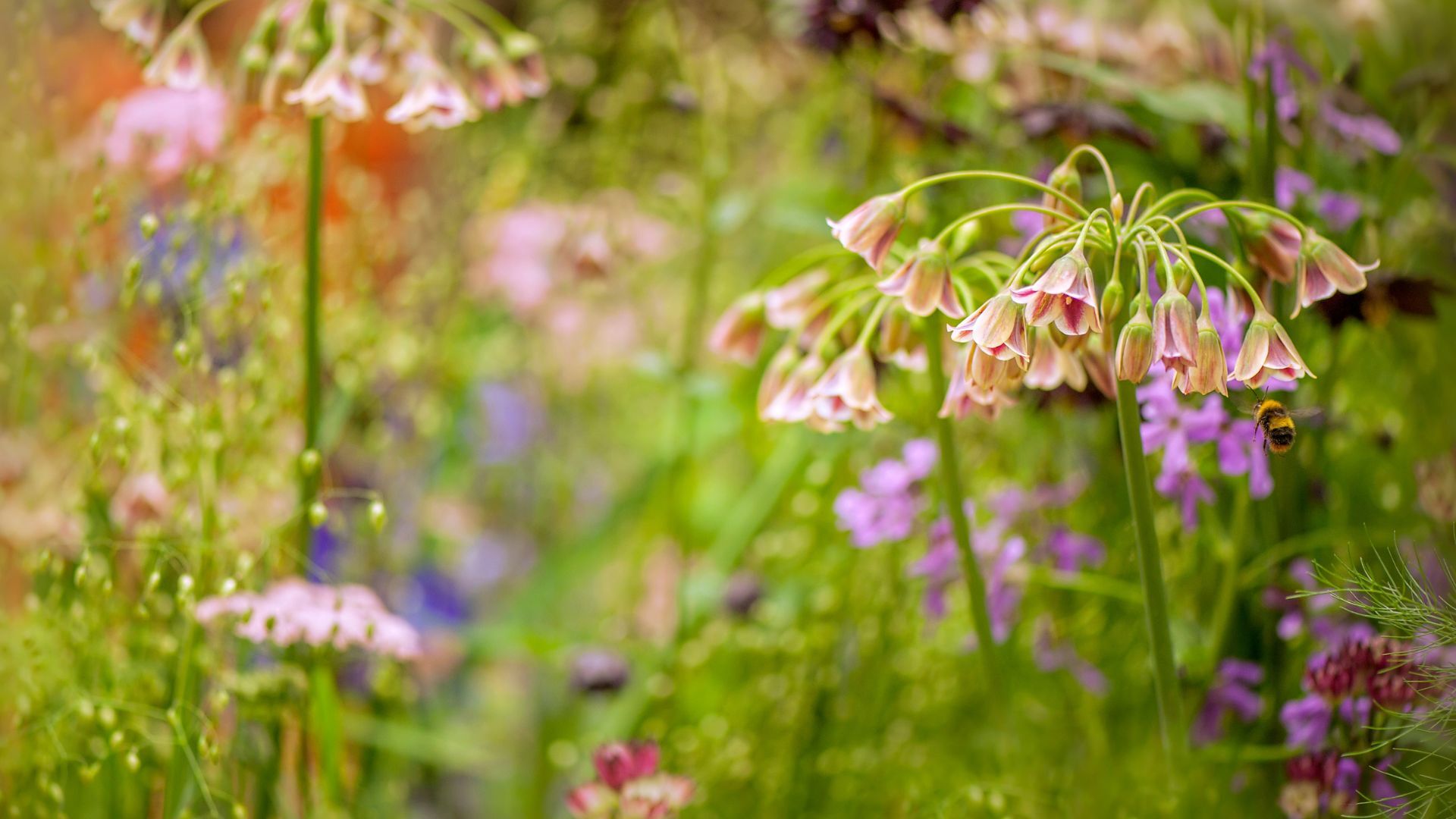

Sicilian honey garlic (Allium siculum) is such a remarkably magical-looking flower; on first glance, it seems as though it has been plucked from a children's fairytale. It is, of course, an Allium, so it's a bulbous herbaceous perennial plant that is very straightforward to grow, but it looks like a fictional fairy castle, and it's hard to conceive that anything quite like it could emerge from a bulb in soil.
Out of all the best varieties of allium, Sicilian honey garlic has to be the most beguiling and whimsical of them all. Even after the flowers fade, their seedheads provide architectural interest long into winter. A true marvel of a plant, and it has become increasingly popular in recent years. It flowers in late spring and early summer, then by midsummer it forms stunning seed pods, which can be dried for winter decorations.
Despite its impossibly delicate, even fragile appearance, its looks belie its character; Sicilian honey garlic is ludicrously easy to grow and faff free once it has established. Here is how to grow Sicilian honey garlic in your garden.
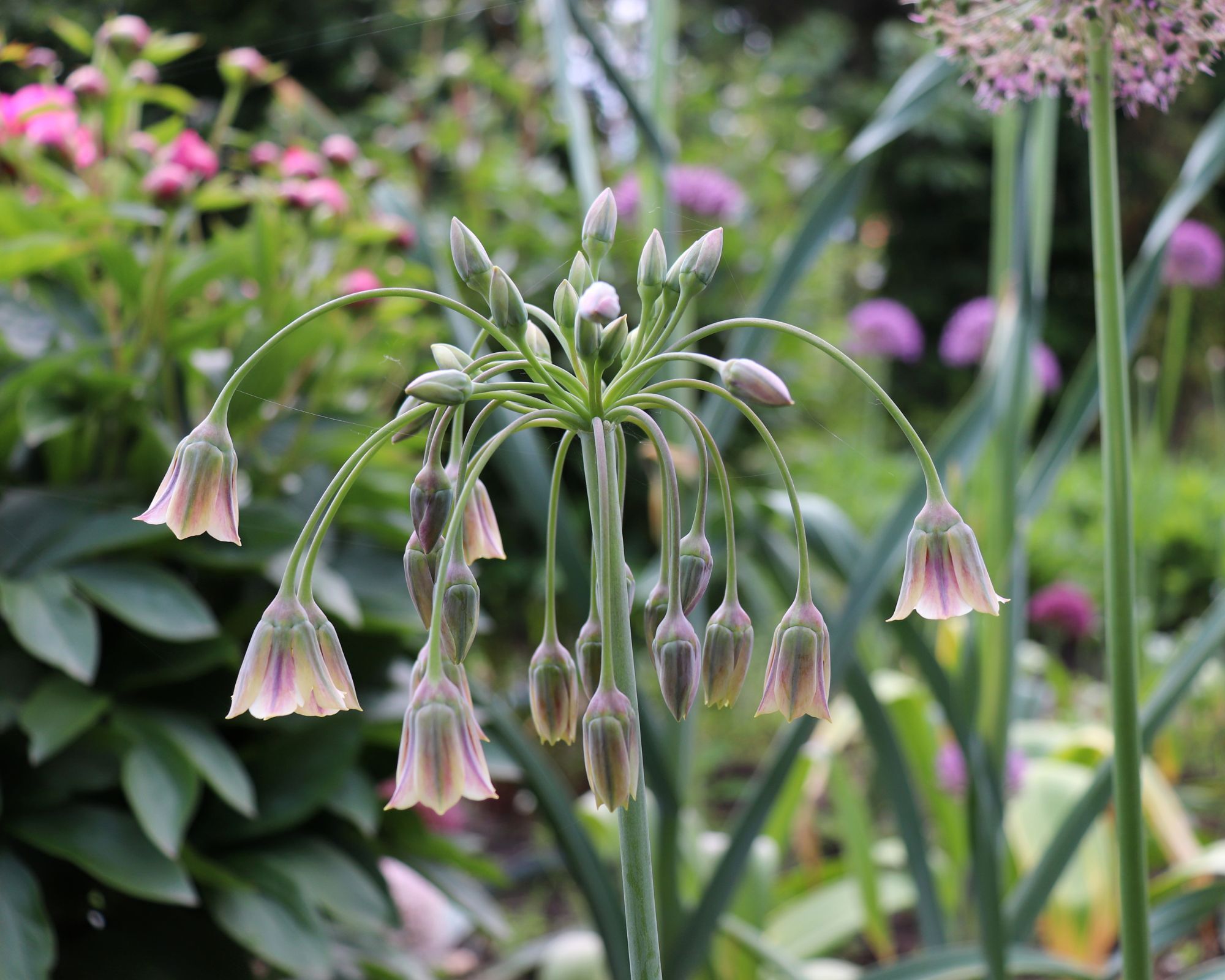
Sicilian Honey Garlic with its dainty drooping bell-shaped flowers
Where to grow Sicilian honey garlic
When choosing a home in your garden for Sicilian honey garlic, it's best to choose a spot in full sun to partial shade.
As befits its origins, they like Mediterranean-like climates, so they do need some sun to keep them from sulking. They grow best in US hardiness zones 5-7.
These alliums are choc-full of nectar and pollen, making them ideal for attracting butterflies and other useful pollinators to your garden.
In my garden, fat bees fly between each flower all day long. So delicate are the flowers, it seems hard to believe they can stand the weight of such well-fed bees. With that in mind, it's worth placing them amongst a wildlife border and other plants for pollinators, so you are laying out an impressive buffet for the bees and butterflies.
Design expertise in your inbox – from inspiring decorating ideas and beautiful celebrity homes to practical gardening advice and shopping round-ups.
The foliage dies back as flowering starts, so ideally position it so that other, smaller plants disguise this; otherwise, you will see bare soil beneath.
Sicilian honey garlic is also suitable for container gardening, and always adds an ethereal softness to pots planted with sturdier, heavier set plants.
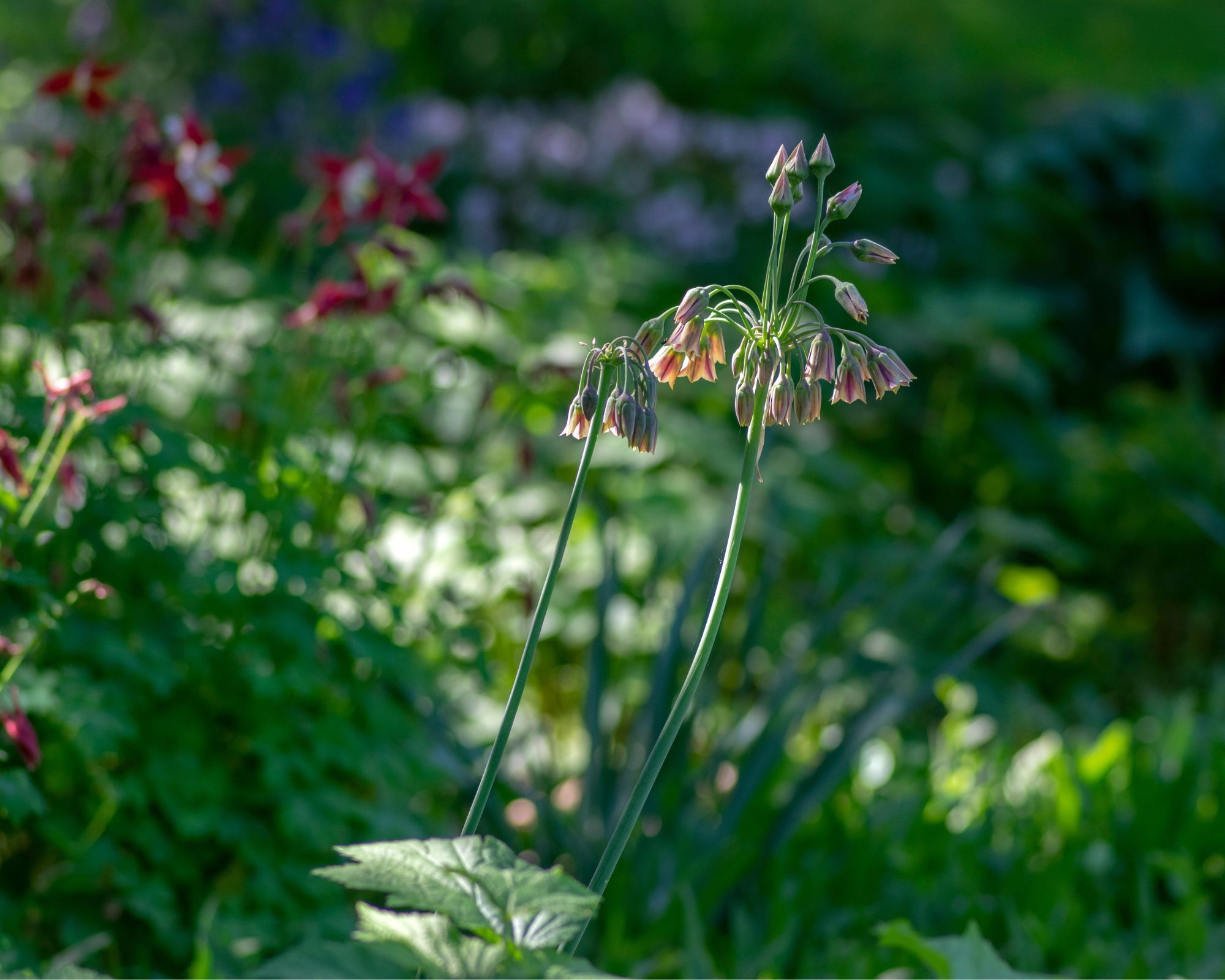
Sicilian honey garlic looks beautiful amongst many flowers that bloom in the same period. Soaring up amongst roses, peonies and late flowering tulips, they are superb.
Bear in mind that Sicilian honey garlic self-seeds freely. It is very difficult to stop this from happening. If, like me, you think this is a boon to your garden, then do incorporate it, but if you don't like the idea of them cropping up at random intervals around your garden, it is probably worth avoiding it.
Whilst they prefer well-draining soil, they are happy in heavy, moisture-retentive soils too. I have never found Sicilian honey garlic to grumble about any soil I have worked with, so long as they aren't waterlogged. It will grow in chalk, clay, loam, and sand.
When and how to plant Sicilian honey garlic
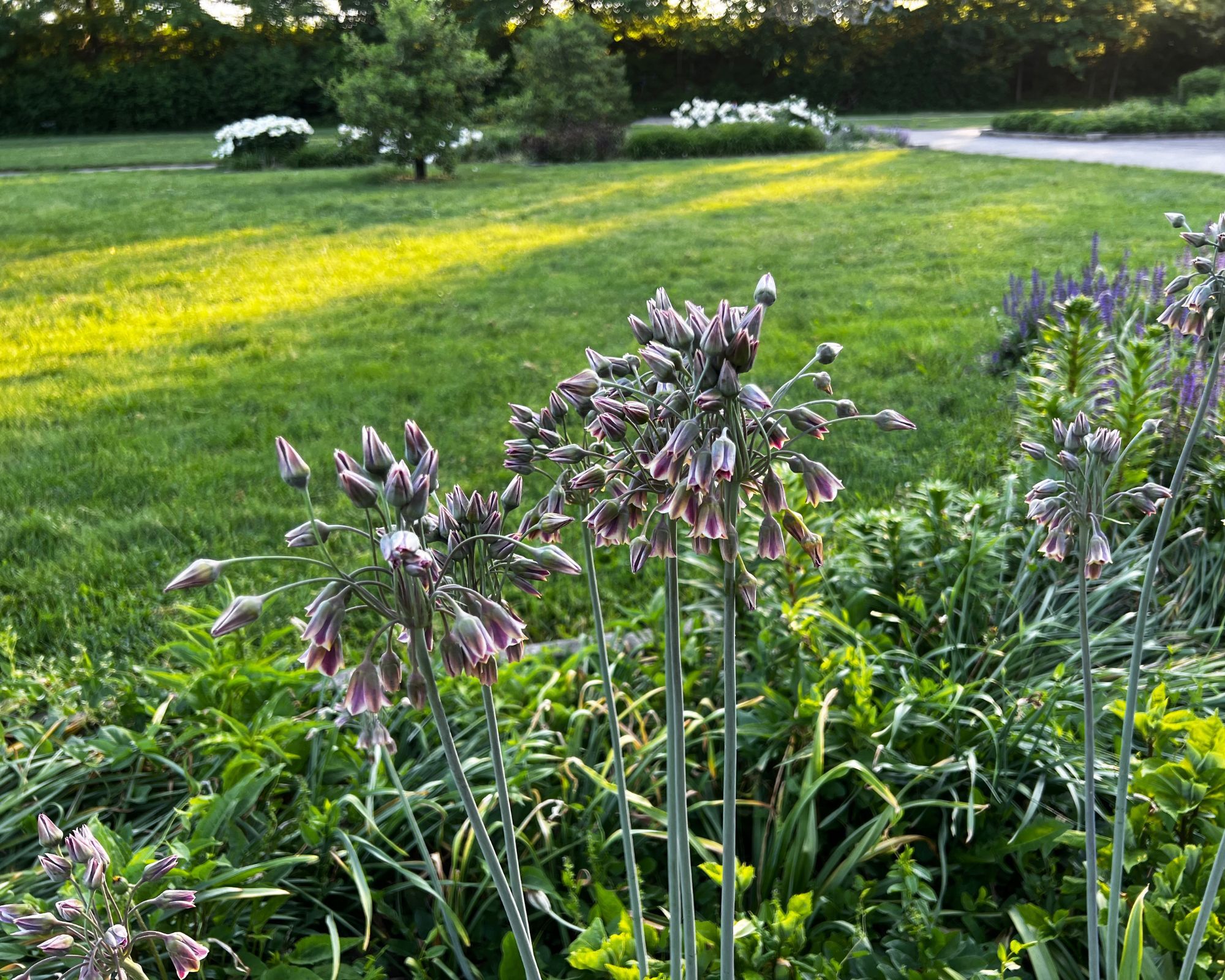
Knowing when to plant alliums is one of the keys to success. Ideally, they should be planted in September or October, before the risk of frost.
Shop Sicilian honey garlic bulbs at Fedco Seeds.
It grows easily from seed, but the plants won't flower for around six years, which is a dealbreaker as far as I'm concerned. For best results, plant the bulbs in the ground around 20 cm deep in groups of around 5.
How to care for Sicilian honey garlic
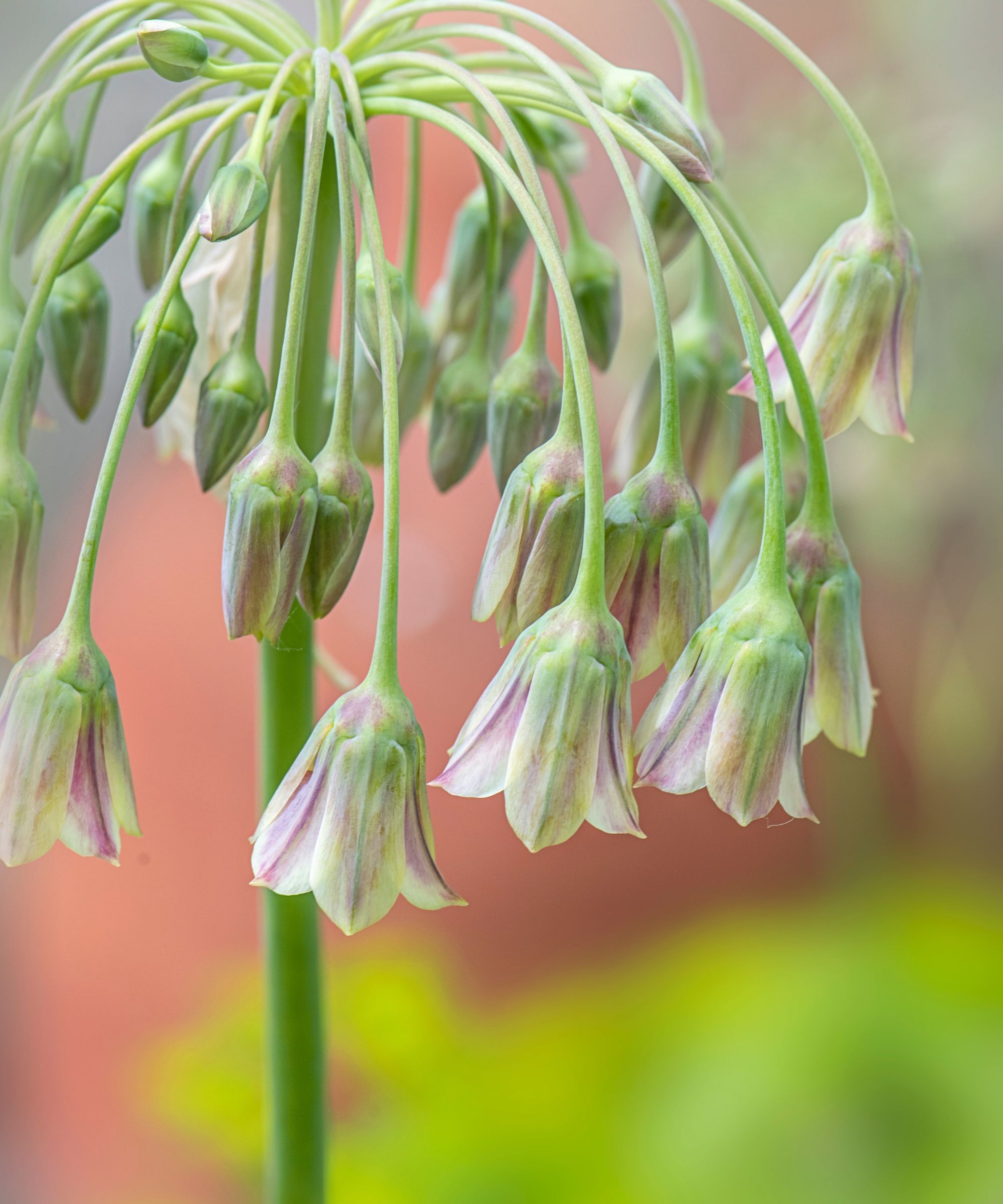
Sicilian honey garlic, being one of those super plants that don't need pruning, is refreshingly hassle-free and low-maintenance.
Once planted, in September or October, they can be watered and left to their own devices.
In springtime, it is worth using a fertilizer to provide them with all the nutrients they need for the flowering period ahead. Most organic plant foods will benefit them, like this vegan plant food available at Amazon.
Eventually, it will reach around 4ft tall and will return year after year with very little to no intervention from the gardener at all. Sicilian Honey Garlic is fully hardy and can be left in the ground over winter.
Luckily, as their name suggests, they have a sweet, savoury scent of garlic, which works as a natural resistance to pests and diseases, so it is highly unlikely to see them being bothered by hungry bugs.
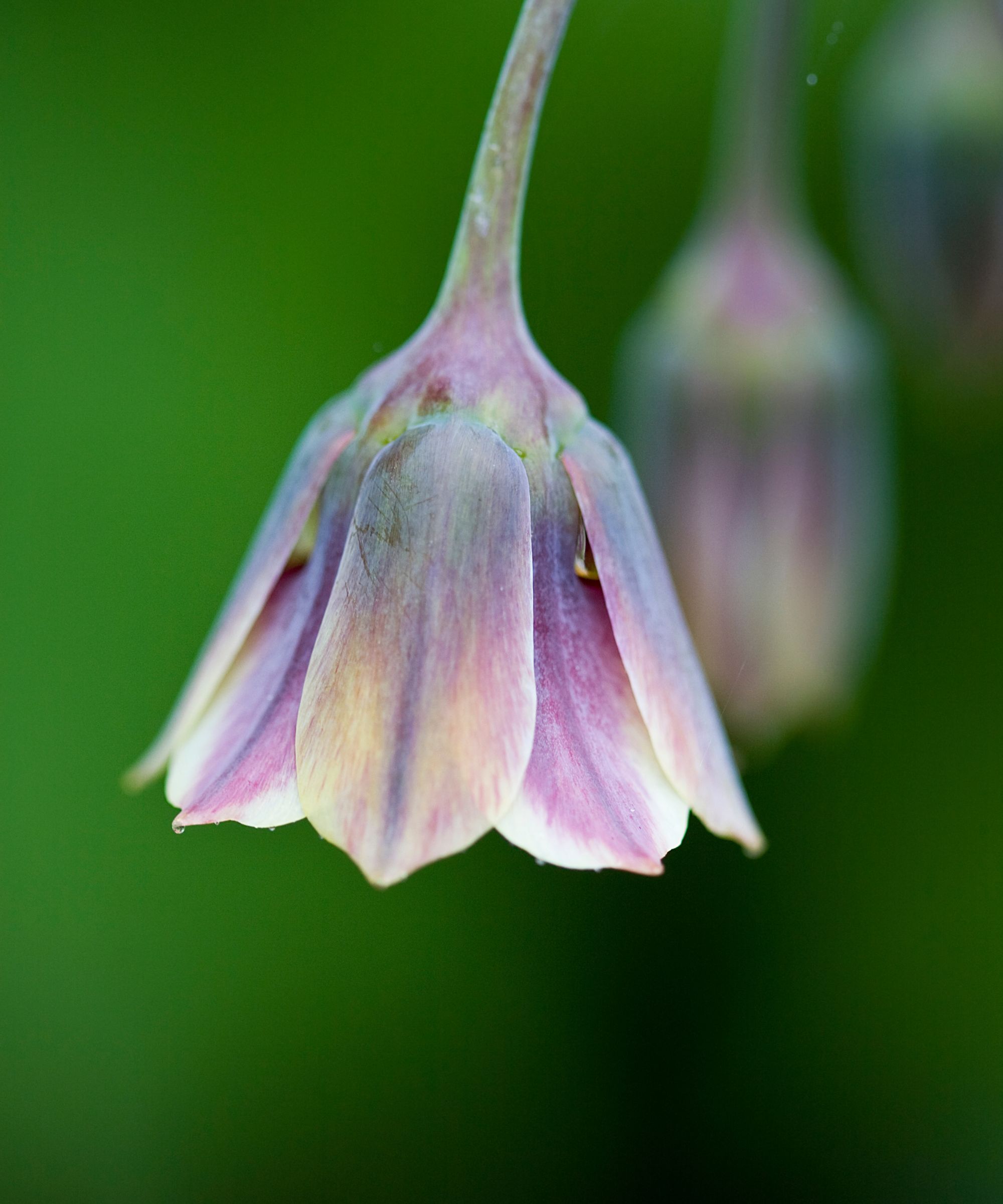
Sicilian honey garlic does not require pruning, although they are such sensationally beautiful cut flowers, it is worth giving them the chop to add a little whimsy to your indoor vases.
If you do need to cut a stem or two, use something like these highly rated Felco snips from Amazon.
Allow the plants to die back naturally and completely; don't attempt to prune as the winter approaches or deadhead in midsummer.
Deadheading alliums will not make them flower again in the same season. Allowing them to go to seed is best – not only are their seedheads just as pretty as their flowers, but the seedheads are also a food source for birds and other wildlife.
Sicilian honey garlic is a stunning flowering plant that regrows every year without issue.
Deer resistant, squirrel resistant, hugely popular with hummingbirds, this delightful little flower is a spring-flowering plant to get on your roster immediately – once planted, sit back and let visitors to your garden gasp, as they inevitably will, at its unusual beauty.

Sophia Pouget de St Victor is the UK Content Editor at Homes & Gardens, bringing readers the latest trends, expert insights, and timeless design inspiration tailored to a UK audience. With a background in luxury interiors and a qualification in Garden Design from London, she has a passion for creating spaces with character and emotional depth. Sophia gravitates toward interiors that defy definition, valuing individuality and effortless elegance. She lives in West London with her partner, two mischievous terriers, and a plump cat named Lettuce.